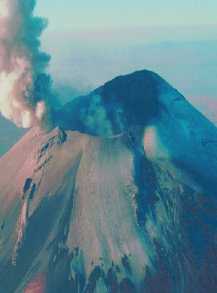This is a volcanic "cone".
Click on image for full size
Courtesy of USGS
Volcanoes
There are several ways in which a volcano can form, just as there are several different kinds of volcanoes. Volcanismis part of the process by which a planet cools off.
Hot magma, rising from lower reaches of the Earth, eventually, but not always, erupts onto the surface. During the eruption, flowing lava and ashform a cone. This cone is what we know as a volcano. Strong earthquakes accompany rising magma just before an eruption, as illustrated in this picture.
Among the different kinds of volcanoes are:
The most prevelant of kinds of volcanos on the Earth's surface are the kind which form the "Pacific Rim of Fire". Those are composite volcanoes which form as a result of subduction of the nearby lithosphere.
You might also be interested in:
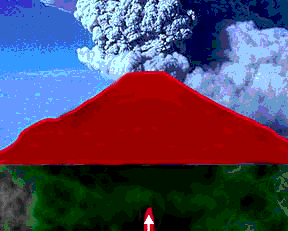
Volcanoes form when hot material from below risesand leaks into the crust. This hot material, called magma, comes either from a melt of subducted crustal material, which is light and buoyant after melting,
...more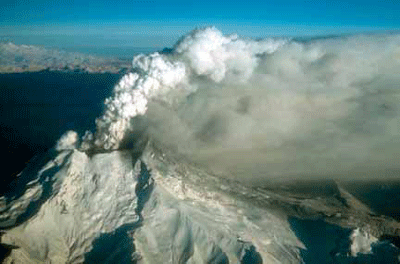
Ash is made of millions of tiny fragments of rock and glass formed during a volcanic eruption. Volcanic ash particles are less than 2 mm in size and can be much smaller. Volcanic ash forms in several ways
...more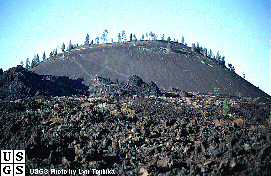
Cinder cones are simple volcanoes which have a bowl-shaped crater at the summit and rarely rise more than a thousand feet above their surroundings. They usually are created of eruptions from a single vent,
...more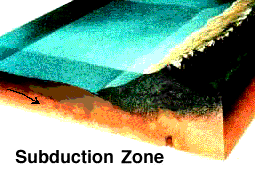
When two sections of the Earth's lithosphere collide one slab of lithosphere can be forced back down into the deeper regions of the Earth, as shown in this diagram. This process is called subduction.
...more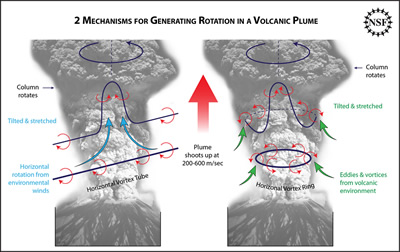
A 200-year-old report by a sea captain and photographs of the 2008 eruption of Mount Chaiten are helping scientists better understand strong volcanic plumes. In a paper published this week in the journal
...more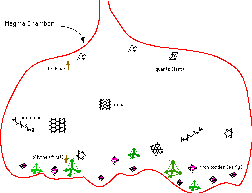
Magma consists of remelted material from Earth's crust and fresh material from the aesthenosphere, relatively near the Earth's surface. When magma is erupted onto the surface in the form of lava, it becomes
...more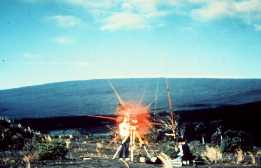
This image shows volcanologists monitoring the changing shape of a shield volcano with laser surveying instruments. volcanologists also use remote sensing and other tools to measure volcanoes.
...more


